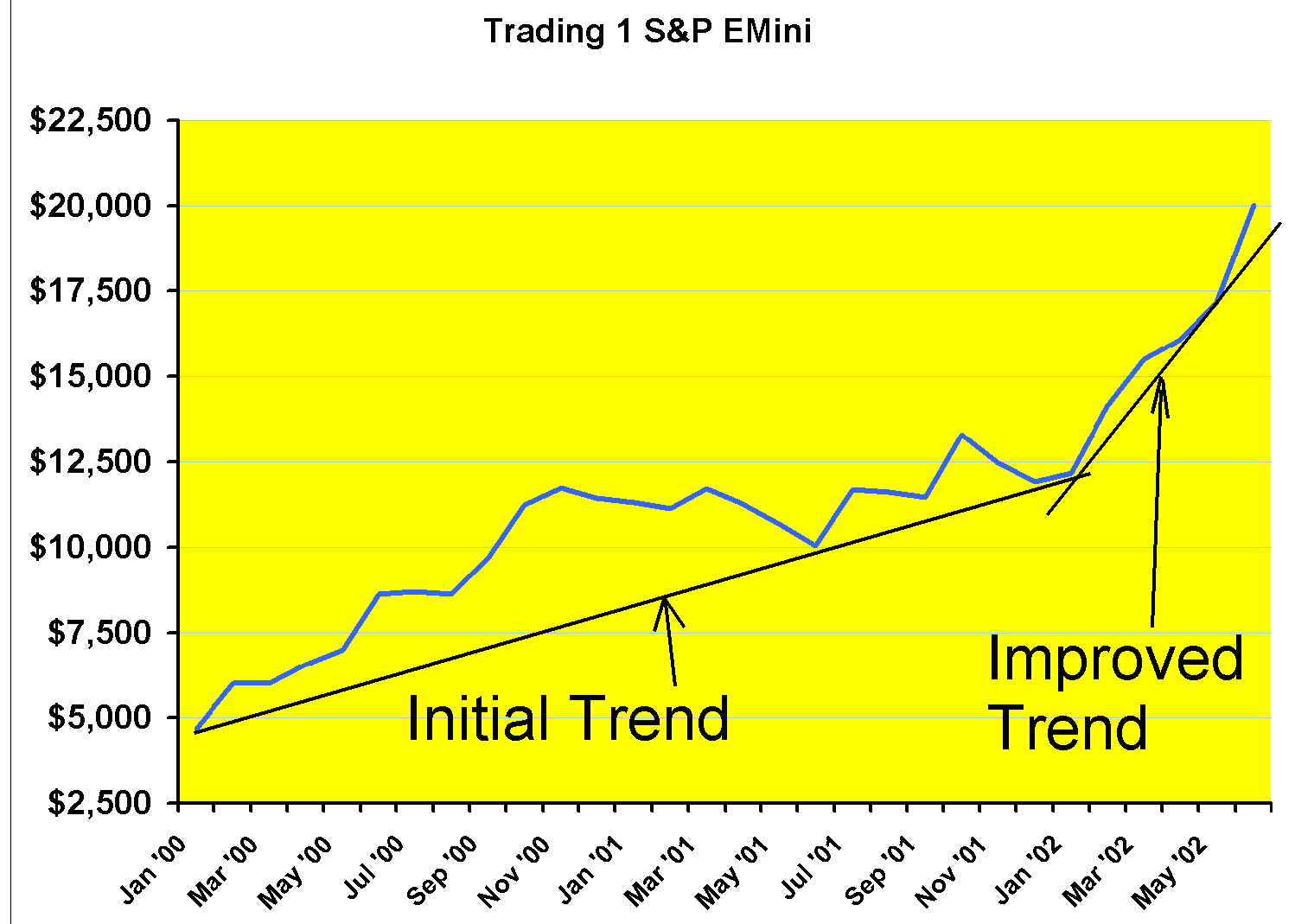

by Dr. Al Larson
|
There are many parts to trading success, but the most important
is persistence. Failing at trading is easy. Estimates are that
up to 90 percent of people who try trading have failed within
a year. This is in spite of readily available data, modern technical
analysis, and superb computing power in the hands of average
traders.
So what are the keys? Certainly, understanding markets is one of them. In my own case, I have spent over 30 years studying WHY prices move WHEN they do and WHERE they might turn. I have published many of my findings on my website at http://www.moneytide.com, and I offer courses for traders. These courses provide an edge to serious traders. That knowledge is not enough. After learning all one can about markets, one has to develop a trading approach, a set of trading rules, and work to apply them consistently. For many years, I have done that on my Tomorrow's Market Email hotline. Basically, each day I have looked at my S&P MoonTide forecasts, selected a promising forecast move, and specified a singe mechanical trade. Over time, this 1ADay approach has produced a nice, rising equity curve. It was a good approach, and I and clients have been pleased. Then late last year, I began to think about how I might make that curve better. Many years ago, while at Bell Laboratories, I learned a process called Process Quality Management, or PQM. This is a formal methodology for improving any process, such as a manufacturing process. Trading is such a process. It manufactures profits. One of the first steps in PQM, is to study your existing process. I did that. I studied many months of past forecasts and trades. When I did that, I discovered two things. First, the MoonTide forecasts did a good job of forecasting the moves during the trading day, but not the detail. Where I had assumed that a forecast turn was exact, I found it might be off 20 or more minutes. I also found that many of the trades could have claimed more money. The basic trading technique was, at a given time, trail in an entry stop, then when elected, trail out an exit stop. Normally, a 3 point stop was used. So a 6 point move was required for a break even trade. The next step in PQM is to invent some process changes. The first one I worked on was the timing problem. For two months, I used my Fractal of Pi pattern to study each day's market moves. What I found was that if I used two particular moving averages, they gave me a signal near the forecast MoonTide turn. But the signal was shifted in time, adjusting for the nature of the MoonTide forecasts. A key step in PQM is to change only one thing in a process at a time. So I just began specifying the mechanical rules to use the averages as the time to trail in an entry stop. That improved the timing. Next I attacked the profit per trade problem. From my Fractal of Pi study, I had found that there were usually two good 9 to 12 point moves each day. If I focused on finding these, I could assume an entry 3 or 4 points into the move, and cash in on a gain of 5 or 6 points. At first, I was afraid that this would not "let the profits run." Indeed, it does not. When I looked at the data, I found that this folklore rule did not work well in S&P daytrading. Claiming a statistically probable gain and getting out looked better on paper. So that became part of the process. The last step in PQM is to monitor the new process over time. One wants to be sure that any improvement is really due to the changes made, and not due to market conditions or other factors. This is the hardest part of PQM, because we tend to focus on the latest change in the data, and not on the long term trend. So it takes time and patience to see if your efforts will pay off. In the case of my 1ADay trades, I knew it would take several months to be sure my changes were really improvement. The chart shows the result. This chart is for starting an account with $5000 in January of 2000, and trading one EMini contract each day, according to the 1ADay trade. The data points are monthly equity position. So a down segment in the chart is a losing month, and a up segment is a winning month.

The initial trend shows the performance before the PQM exercise. While the trend was solidly up, there were many months with modest losses. These never exceed two months in a row, but were still bothersome. They were the motivation for the whole PQM effort. The new process was fully in place in February, 2002. The improve trend has held for 5 months running. So at this point it looks like the process changes are a success. As in all such PQM activities, that has to go with the caveat, "so far." PQM is a tool that can be used to improve any process. It is a particularly good tool for traders to use to beat those 90 per cent failure odds. Hopefully, this example will motivate you to try it. |